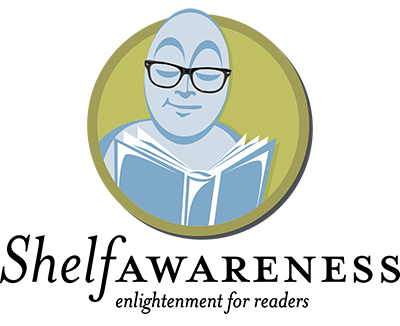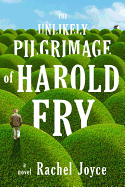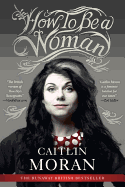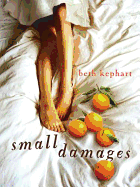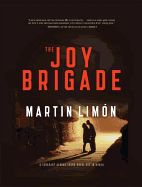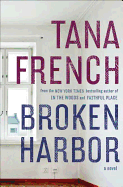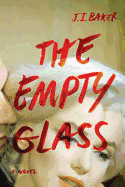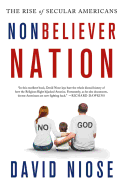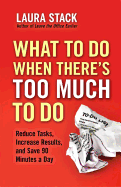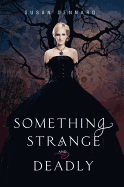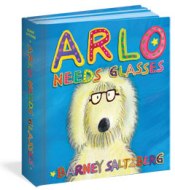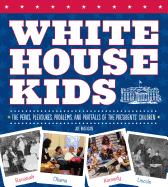Week of
We've been inundated with doom-and-gloom stories about the London Olympics, so a few good books might help put rain, mud and missile launchers out of mind. There are any number of books about the Olympics generally, like How to Watch the Olympics: The Essential Guide to the Rules, Statistics, Heroes, and Zeroes of Every Sport by David Goldblatt and Johnny Acton (Penguin). If you've ever wondered how wide a balance beam is (so you can try a move at home), or about the rules and strategies for fencing, this is your book.
 Sports Illustrated's Jack McCallum writes about the creation of the U.S. Olympic basketball team of 1992 and its path to gold in Dream Team (Ballantine). Subtitled How Michael, Magic, Larry, Charles and the Greatest Team of All Time Conquered the World and Changed the Game of Basketball Forever, it's a funny, respectful, expert, complete and literary examination of the team's permanent effects on basketball.
Sports Illustrated's Jack McCallum writes about the creation of the U.S. Olympic basketball team of 1992 and its path to gold in Dream Team (Ballantine). Subtitled How Michael, Magic, Larry, Charles and the Greatest Team of All Time Conquered the World and Changed the Game of Basketball Forever, it's a funny, respectful, expert, complete and literary examination of the team's permanent effects on basketball.
Fiction also competes for attention. Running the Rift by Naomi Benaron is the third Bellwether Prize winner published by Algonquin, awarded biennially by Barbara Kingsolver for an unpublished novel that addresses issues of social justice. It's a memorable coming-of-age story of Nkuba Jean Patrick, a Tutsi in Rwanda at the height of the Hutu-Tutsi conflict. Jean Patrick is a phenomenal runner, specializing in the 800-meter race. His dream is to go to the Olympics.
Our reviewer said that Gold by Chris Cleave (Simon & Schuster) "spins a tire-ripping velodrama out of two subjects underrepresented in novels: the head-games of Olympic track cycling and the heart-splitting demands faced by female athletes who try to balance motherhood and elite competition in their peak physical years."
For younger readers, sportswriter John Feinstein has come out with Rush for the Gold: Mystery at the Olympics (Knopf), another sports mystery featuring Stevie Thomas and Susan Carol Anderson. In this book, Susan Carol is an Olympic swimmer with some agents and sponsors who just might go too far to ensure her win. --Marilyn Dahl, book review editor, Shelf Awareness
The Sandcastle Girls
by Chris Bohjalian
Chris Bohjalian (The Night Strangers; Midwives) introduces Laura Petrosian, a novelist usually focused on "domestic comedy about New Agey women on the social margins." Laura decides to learn how her paternal grandparents survived the Armenian genocide--the "Slaughter You Know Next to Nothing About"--and answer the question "How do a million and a half people die with nobody knowing?" She begins her research with 1915, the year her Bostonian grandmother, a recent graduate of Mount Holyoke, travelled to Syria to escape a suitable match with a well-to-do young man and to discover her own independent identity and help the "less fortunate." What she found was a recently widowed Armenian engineer with whom she quickly fell in love--even in the midst of a massacre of unimaginable proportions.
In The Sandcastle Girls, Bohjalian successfully balances a poignant character-driven romance with an exploration of a chapter of early 20th-century history that is little known to many Americans, yet unforgettable. Bohjalian is the grandson of Armenian survivors and grounds the narrative in historical facts about the genocide (his list of reference materials is exhaustive).
The Sandcastle Girls would be an excellent choice for a book club, satisfying readers who love a good story as well as those who enjoy learning a bit about history. --Kristen Galles from Book Club Classics
Discover: A gripping historical account of the Turkish genocide of the Armenians, as well as a testament to the indefatigable human spirit and power of love.
The Unlikely Pilgrimage of Harold Fry
by Rachel Joyce
Harold Fry makes for an unlikely pilgrim. A British pensioner, he spends most days sitting in his chair half-listening to his wife, Maureen, harangue him over trivialities that stand in for the larger disappointments of their marriage--until he receives a farewell letter from a nearly forgotten former coworker, Queenie Hennessy, who is dying of cancer. Troubled and energized, Harold writes Queenie a letter in response. A chance conversation gives Harold the notion that he can save Queenie's life by an act of faith: he will walk 600 miles from his village to Berwick-upon-Tweed and deliver the letter in person. In a message to Queenie, Harold says, "I will keep walking and you must keep living." Queenie once did Harold a good turn in a dark time, and he believes he can return the favor.
Harold sets out in a light jacket and yachting shoes, completely unprepared for the journey or for the stories he will hear from strangers he meets on his way, or for the memories of his own lonely childhood, his promising early years with Maureen and their son, David, and the tragedy that wrecked their family.
A redemptive journey of determination and love rekindled, Rachel Joyce's debut novel features an unusual Everyman whose grit and growth suggest that it's never too late for second chances. Through emotional hardship and physical injury, Harold's unfailing commitment to Queenie and ability to finally open his heart to others after so many years will inspire readers as they share his triumphs and pitfalls. --Jaclyn Fulwood, blogger, Infinite Reads
Discover: British pensioner Harold Fry undertakes an inspirational journey of 600 miles on foot to say goodbye to a dying woman who once saved him.
Mystery & Thriller
The Joy Brigade
by Martin Limon
Martin Limón's first seven books starring Sergeant George Sueño focused on his investigations as a military police officer in the Korean DMZ. With The Joy Brigade, Limón sends Sueño on an adventure into North Korea that will test every bit of his strength and intelligence.
The year is 1972: Kim Il-Sung is looking to retire, but he wants to invade South Korea and reunite the Korean nation before handing power over to his son. Sueño is on a secret mission to find his lover, Doc Yong, who fled to North Korea the year before. Doc Yong has an ancient manuscript detailing a secret underground passage from North to South Korea--information that the Americans want to keep from Kim Il-Sung at all costs.
But finding Doc Yong and the manuscript and escaping back to South Korea is no easy matter. As a Latino more than six feet tall, Sueño stands out by a mile, and he will need all the tricks he learned growing up in East Los Angeles to protect him.
Filled with adventure, torture, sex, tae kwon do and suspense, The Joy Brigade moves at breakneck speed as Sueño crisscrosses the North Korean countryside, gathering information and attempting to evade Rhee Mi-Sook, the beautiful head of the North Korean secret police. Capitalizing on the recent interest in North Korea, The Joy Brigade offers a detailed look at the North Korea of 30 years ago, and the lengths to which the U.S. was--or wasn't--willing to go in order to prevent a war. --Jessica Howard, blogger at Quirky Bookworm
Discover: North Korea is a dangerous place for an American in 1972, but military police officer George Sueño is determined to complete his mission, whatever the cost.
Broken Harbor
by Tana French
In Broken Harbor, Tana French returns to Dublin murder squad investigator Mick "Scorcher" Kennedy, from her third novel, 2010's Faithful Place. Patrick Spain and his two children have been murdered in their home; Jenny, wife and mother, is in intensive care. At first, Scorcher and his rookie partner, Richie Curran, think it will be a slam-dunk, but there are weird goings-on. Pat and Jenny's house is squeaky clean--but why are there holes punched in the walls? Why are there baby monitors and cameras inside the holes? Why have computer files been erased? Who is the never-seen prowler, defying all locks and alarms?
Pat was convinced that he heard an animal in the attic; thus the holes and monitors. No one else ever heard anything. Was he going off the rails because he had lost his job and was about to lose his home?
Scorcher has his own painful history with Broken Harbor (now gentrified to Brianstown), where his family used to spend two halcyon weeks each summer in a caravan. That is, until the last time, when tragedy struck. That family loss particularly affected his mentally unstable younger sister, Dina. Hearing about murder in Broken Harbor has sent her reeling. Scorcher and Geri, his older sister, try to care for Dina, but she eludes them. Scorcher doesn't have his own memories as tightly under control as he once thought.
These two separate and very sad stories are multifaceted, complicated by many unknowns, and draw the reader deeper and deeper into the psyches of her characters. This is Tana French at her writerly best. --Valerie Ryan
Discover: Tana French brings back brash detective Scorcher Kennedy, now involved in the strange circumstances of a triple murder. Psychological suspense of the highest order.
The Empty Glass
by J.I. Baker
J.I. Baker's debut novel, The Empty Glass, offers the reader a thrilling noir adventure. It's narrated by Ben Fitzgerald, a Los Angeles County deputy coroner called to the home of Marilyn Monroe on August 5, 1962. Upon arrival, he finds the world's most adored movie star lying naked in her bedroom, dead from an apparent overdose--and he takes her diary, known as "The Book of Secrets," when he leaves.
When Fitzgerald learns of the unexpected results of Marilyn's autopsy--no sign of pills in the stomach, unexplained bruises at the hip and back, an abnormal colon and markings to suggest the body had been moved after death--he begins to suspect a cover-up and embarks on a rousing and dangerous quest to unravel the mystery surrounding her death. In a clever parallel plot twist, Fitzgerald's movement toward the truth mirrors a struggle described by Marilyn within The Book of Secrets regarding her own involvement in a conspiracy involving sex, politics and power.
Though some readers might initially be confused by the voice of the narrator (Fitzgerald's recollections are targeted to a therapist, referred to as "you" in the book) and use of both flash-forward and flashback scenes, it all becomes clear soon enough. Buckle up--the trip through The Empty Glass is an exciting ride. --Roni K. Devlin, owner, Literary Life Bookstore
Discover: The executive editor of Condé Nast Traveler offers a novel with a new take on the conspiracy theories that suggest Marilyn Monroe's death was not a suicide.
Biography & Memoir
Have Mother, Will Travel
by Claire Fontaine and Mia Fontaine
Ten years after the events described in their first mother-daughter memoir, Come Back, Claire and Mia Fontaine's connection has grown shaky. When she had to, Claire stepped up the mama-bear role and got her daughter--drug-addicted and out of control, acting out in response to sexual abuse by her biological father--on the road to recovery. Mia's now a healthy, independent 20-something finding her way into adulthood, and as Claire's role in her daughter's life has changed, she's losing her own footing. The Fontaines decide to address their respective and shared crises by going abroad, setting out on a month-long global scavenger hunt followed by a season living in France.
Mia and Claire take turns narrating Have Mother, Will Travel; even if the shifts weren't signified by different typefaces, their voices would be identifiable. Claire is chatty and philosophical, often reflecting on the universal experiences of motherhood, and the mother-daughter bond in particular, as she observes it across cultures, while Mia's sections are more introspective and focused on the personal.
As they step out of their comfort zones and embark on foreign adventures, Claire and Mia interact with one another in ways they never have before. Often, parents and children are ill-prepared for the natural shifts in their relationships as the children become adults, even when those relationships haven't been tested by crises as the Fontaines' was. Have Mother, Will Travel offers an unusual perspective on the growth of the parent-child relationship. Under rather abnormal conditions, they're working toward a sense of normalcy. --Florinda Pendley Vasquez, blogger at The 3 R's Blog: Reading, 'Riting, and Randomness
Discover: A mother and daughter exploring the world and learning how to navigate their relationship.
How to Be a Woman
by Caitlin Moran
British journalist Caitlin Moran's memoir-manifesto How to Be a Woman is as funny and careerist as Tina Fey's Bossypants, as divulging as Ayelet Waldman's Bad Mother and as earthy as Cheryl Strayed's Wild.
In chatty chapters that resemble newspaper essays (the author is a TV critic and columnist at the Times of London), Moran blends self-deprecating autobiographical anecdotes with earnest meditations on the parlous state of modern feminism. Rakishly personal and uninhibited, How to Be a Woman treats feminism in a down-the-pub clever, not ivory-tower rarified way, and apart from a few references to Germaine Greer, it takes the history of the women's movement for granted.
How to Be a Woman garners its hot topics from Moran's life, beginning with her pitiable 13th birthday and her simultaneously underinformed and privacy-free adolescence as the eldest in a big home-schooled family. An early gem recounts her reporting debut as a 16-year-old Wolverhampton wunderkind in the all-male London newsroom of Melody Maker: Moran's descriptions of her efforts to fit in are both funny-awkward and inspiring. How to Be a Woman's structure is more thematic than autobiographical, with chapters that shift quickly from the personal to the essayistic on everything from body image to weddings to Lady Gaga, with the exception of some intensely intimate accounts of childbirth and an abortion.
Moran's one-liners and set-pieces are offhand, mischievous without being mean, and occasionally hilariously rude. Some bring out the guffaws and the shakes, and put to rest forever the idea that feminists don't have a sense of humor. --Holloway McCandless, blogger at Litagogo: A Guide to Free Literary Podcasts
Discover: A British journalist's personal, funny and occasionally ribald approach to modern feminism.
History
Osceola and the Great Seminole War
by Thom Hatch
Ask someone to name a famous Native American from history, and the answer is likely to be Geronimo, Crazy Horse or Sitting Bull--all known for challenging the might of the United States army. Osceola, the early 19th-century leader of the Seminoles, is rarely recalled, yet his struggles to maintain his people's homeland in Florida, his bold strikes against forces consistently larger than his own and his dignity and composure even when captured mark him as a Native hero worth remembering.
Thom Hatch's Osceola and the Great Seminole War tells the story of how Osceola rose from the role of a tribal warrior to become the leader of his people as they fought against the injustices of the U.S. government. Despite years of guerrilla attacks on American forces, the Seminoles were not a warrior culture; Osceola was at heart a pacifist, wanting little more than to be left alone to live with his people as they chose, where they chose. Stories of his battles--especially the treachery of being taken prisoner while under the protection of a white flag--captured the minds of contemporary Americans, but this fascinating figure of Native American history has sadly faded from our modern consciousness--a wrong hopefully righted by Hatch's detailed account. --Kerry McHugh, blogger at Entomology of a Bookworm
Discover: A compelling, detailed history of an overlooked Native American hero and the war he led against the United States in the early 19th century.
Current Events & Issues
Nonbeliever Nation: The Rise of Secular Americans
by David Niose
"Secular Americans," or Americans who conduct their lives without reference to a deity, form one of the largest demographic groups in the country and also one of the fastest-growing--estimated at 15% to 25% of the population, at least 50 million. Yet they have long felt themselves shut out of the national debate on a number of issues; particularly since with the rise of the religious right, the lack of belief in a god has been painted as the quintessentially un-American moral failing.
In Nonbeliever Nation, David Niose shows how religious rhetoric has influenced many issues that are important to the secular community--and led to the teaching of creationism and intelligent design in public school science classes, the lagging pace of LBGT rights and the denial of environmental degradation and climate change.
In easy-to-read chapters that are nonetheless full of information, Niose combines statistics, court decisions and anecdotes with clarity, arguing that the secular movement's goals are not only reasonable but necessary to a fundamentally equal and just society--and revealing how, with ever-increasing numbers of secular Americans "coming out of the closet," those goals are gaining ground.
The voice of secular Americans is not yet as loud as that of the religious right, or even that of the moderately religious. But it's getting louder. Nonbeliever Nation provides a useful reference guide to how we got here--and how secular individuals and communities can change the game. --Dani Alexis Ryskamp, blogger at The Book Cricket
Discover: The head of the American Humanist Association makes his case for a secular understanding of life, liberty and the pursuit of happiness.
Psychology & Self-Help
What to Do When There's Too Much to Do: Reduce Tasks, Increase Results, and Save 90 Minutes a Day
by Laura Stack
"Today's fast-paced, high-pressure [work] environment often requires sixty, seventy, eighty, or more hours a week. But productivity tends to decrease as work hours increase," Laura Stack writes in What to Do When There's Too Much to Do. Stack, a personal productivity trainer, offers readers clear-cut solutions for the common problem of working long hours at the office to the detriment of personal health and happiness. By following her workflow formula, she says, readers will learn that "it's simple to rearrange your life so you can have a life outside of work."
The first steps toward this more balanced existence include assessing what truly needs to be accomplished on any particular day, scheduling time to complete those tasks and focusing one's attention by shutting out distractions (yes, this means forgoing checking personal e-mail and updating Twitter and Facebook). By saying "no" more frequently, by delegating work to others more suited for the job and by focusing on one task instead of multi-tasking, workers can gain on average about 90 minutes a day.
Stack shows how to tackle towering paper pyramids and overloaded inboxes--and voice mail, too--with an emphasis on efficiency and reducing the inflow of information. Multiple checklists and links to online information help keep readers on task toward developing a well-organized and effective system. Although aimed primarily at office workers, these tips will help anyone connected to the Internet become more efficient. --Lee E. Cart, freelance writer and book reviewer
Discover: Expert advice and time-saving practices from a productivity pro that will streamline your workplace.
Children's & Young Adult
Small Damages
by Beth Kephart
Beth Kephart's (You Are My Only) life-affirming story describes the summer after Kenzie's senior year, when she decides to give birth rather than end her pregnancy.
Her father's death, months before, is Kenzie's first great loss. She wants to give birth and create a new life. Her mother sends Kenzie to southern Spain, where a college friend knows someone who wants Kenzie's child. Kenzie's kind host, 61-year-old Miguel, raises Spain's best bulls at his estate, Los Nietos, for the world-renowned bullfights in Seville. Kenzie helps Estela, whom Miguel calls "our queen," in the kitchen. And Esteban is the 18-year-old horseman. Kenzie asks many questions but learns she must earn their answers.
Kephart beautifully captures the way people communicate when they do not know each other or speak each other's languages. Conversations evoke the spareness of scenes from The Sun Also Rises, the long shadows stretching in the silences, the religion of the bullfight. "When reading Hemingway watch the pronouns," Kenzie's English teacher told her. "We should have been more careful," is the way Kenzie breaks the news to Kevin. "What are your choices?" he responds. Estela and Miguel and Esteban are a part of all that they know and all that they do, and they teach this to Kenzie in a way that fills her. Eager to see what Kenzie will do, we also wish to slow down, breathe in the smell of Estela's paella, the scent of the orange trees. As soon as the book ends, we want to begin it again. --Jennifer M. Brown, children's editor, Shelf Awareness
Discover: Eighteen-year-old Kenzie, sent to Spain to hide her pregnancy, learns to love the country, its people and herself.
Something Strange and Deadly
by Susan Dennard
From the sounding of "the Dead alarm" on the first page, readers will be awakened to an 1876 Philadelphia replete with animated corpses, irresistible romance and a game of intrigue.
Narrator Eleanor Fitt awaits the arrival of her brother, Elijah, who's been away for three years, at the Centennial train depot in Philadelphia. One of the walking Dead delivers a cryptic letter to Eleanor informing her that Elijah is stuck in New York and can come home only "if I do what he needs." Eleanor knows her scholarly brother cannot manipulate a corpse, and he has long been pursued for the research and ancient artifacts he's unearthed about theology during his travels through Europe. She must enlist the help of the Spirit-Hunters who are in town to deal with the mysterious necromancer that's controlling the Dead.
A proper high-society girl, Eleanor should not be messing with the Dead, let alone exchanging cut and thrust with low-society boy Daniel Sheridan. But Daniel is the handsome and memorable Spirit-Hunter hired to expel the spirits of the Dead. The tensions between them will please romance readers, while Daniel's clever inventions will appeal to fans of steampunk. But the mission takes precedence over courtship, as Eleanor is occupied by protecting an essential grimoire, banishing a wicked ghost and battling the Hungry--quick, rabid corpses desperate to feed.
Those who enjoy Cassandra Clare's the Infernal Devices series will likely be spellbound by Susan Dennard's macabre and impressive debut, the first in a planned trilogy. --Adam Silvera, reviewer
Discover: Zombies and voodoo and corsets! Oh my! Teenaged Eleanor Fitt enlists Spirit-Hunters to rescue her missing brother from a necromancer.
Arlo Needs Glasses
by Barney Saltzberg
Arlo's owner suspects that his beloved pooch has vision problems, and he puts readers who may be facing the same predicament at ease, right along with Arlo, in this entertaining and interactive picture book.
Right from the cover, readers sense that Arlo, a yellow labradoodle, is the center of the boy's universe. The pup's name appears in the equivalent of lights, with the letters outlined in fiesta-bright colors, filled in with contrasting hues and then polka-dotted in a way that suggests small light bulbs on Broadway theater marquees. Arlo loves to play catch with his boy. And the feeling is mutual. The boy begins, "I love my dog Arlo. He likes to play...." Arlo wags excitedly in anticipation, and a gatefold depicts him leaping into the air to catch a red ball with blue, yellow and green dots. The appearance of the ball picks up on the boldly festooned capital letters of the cover. Then one day, suddenly, Arlo can't seem to catch the ball. A sequence of images against a tangerine backdrop shows the red ball bypassing the pup in all manner of ways ("it flew... or zoomed... or whizzed"), and it eventually "bopped him on the nose!" On a lime-green spread, the boy tries and tries to help Arlo, even demonstrating how it's done himself: children pull a tab that guides the ball securely into the boy's mouth. The boy looks so hopeful, tossing the ball to Arlo. Their figures appear as collage cutouts against the green grass and the wide brushstrokes of the blue sky, with slight shadows behind them as they try again. It's the same backdrop as the successful throw-and-catch gatefold in the opening scene. But this time, the ball bounces off the labradoodle's head. ("It was no use. Arlo still couldn't catch.") Nothing works. Then the boy (who, by the way, wears glasses himself) finds the answer in a big red book. (A pull-tab moves both the boy's and dog's eyes from left to right, to show they're reading.) The boy says, "I decided Arlo would need to go have his eyes checked."
As he did with his other fabulous book about solving problems, Beautiful Oops!, Barney Saltzberg exploits the possibilities of the interactive pages. He depicts an eye chart in the doctor's office that someone with 20/20 vision (such as the boy and the eye doctor, both wearing glasses) would see perfectly. With the pull of a tab, the letters blur and we get some idea of what Arlo might be seeing. (Eagle-eyed readers may also detect the words hidden in the eye chart.) The pooch also looks through a kind of neon confetti-colored "phoropter." Here again, as Saltzberg spells out "phoropter," he uses the Broadway-marquee lettering, as if children are picking up a party favor when they look through the accordion-style fancy-dancy binoculars. At the very bottom, in tiny letters, a prognosis awaits ("Arlo needs glasses").
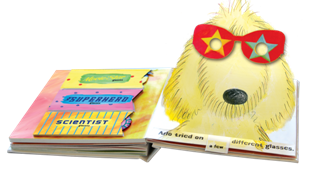
Furthering the party favor theme, Saltzberg provides a trio of glasses in slipcases mounted on the page, for kids to try on Arlo (or themselves)--Movie Star, Superhero, and Mad Scientist spectacles (the latter with festive polka dots in clashing colors that seem to throb against their sturdy, laminated cardboard backdrop). Each fits securely on Arlo's head, which bends slightly forward from the page with a pull-tab. But none of those looks seem quite right for Arlo. He eventually does find the "perfect pair" (on the next page). The bespectacled boy throws the ball (tethered to the page with a yellow ribbon) to his beloved newly bespectacled dog, who catches it securely on the Velcro landing spot in his mouth.
Together, Saltzberg (who also wears glasses, incidentally), Arlo and his boy demonstrate to children with vision problems that there is a simple solution, what to expect at the eye doctor, and how life improves once you can see again. A celebratory finale holds more laughs in store, and plenty more to pore over. Saltzberg once again uses interactive pages to show how problems may be solved with a little effort and a sense of humor. --Jennifer M. Brown
White House Kids: The Perks, Pleasures, Problems, and Pratfalls of the Presidents' Children
by Joe Rhatigan, illus. by Jay Shin
This fascinating approach to American history, through the experiences of the children who have lived in the White House, offers details that young readers will eagerly devour.
Joe Rhatigan (Prize-Winning Science Fair Projects for Curious Kids) starts by asking young readers to "Imagine for a moment that your mom or dad gets a new job... in a different city, and you have to move, even though the job [may only last] four or eight years." He begins with George Washington, who never got to live in the White House (it was under construction), then moves to President John Adams, who did. But this is no straight chronology: Rhatigan zeroes in on some of the more interesting child personalities (such as Alice Roosevelt, a fashion icon) as well as memorable moments in history. Along with a generous smattering of photographs, fact boxes and highlighted quotes, the author sprinkles in fun trivia (e.g., President John Tyler holds the record with 15 children; seven born after his presidency).
In the course of the book, Rhatigan demonstrates how challenging it is for the President and First Lady to raise a family while also running the country (including keeping their privacy). He lightens things up with themed sections such as parties held at the White House, from weddings (there were 21--nine of them for children of presidents) to memorable birthday celebrations. Appendices include a presidential timeline and what happened to the children as adults. --Jennifer M. Brown, children's editor, Shelf Awareness
Discover: An essential guide for a White House visit, and an enlightening approach to U.S. history.

